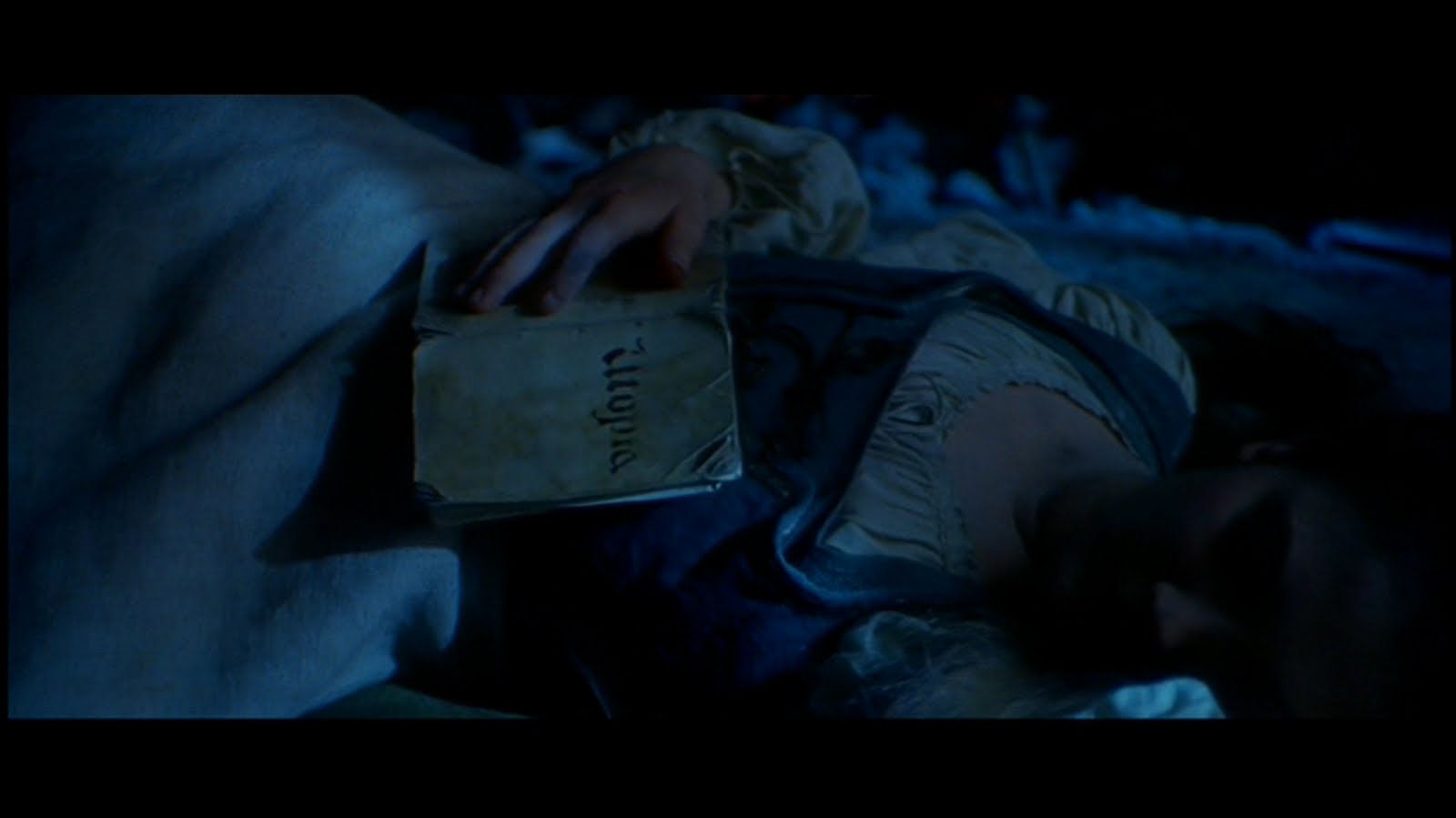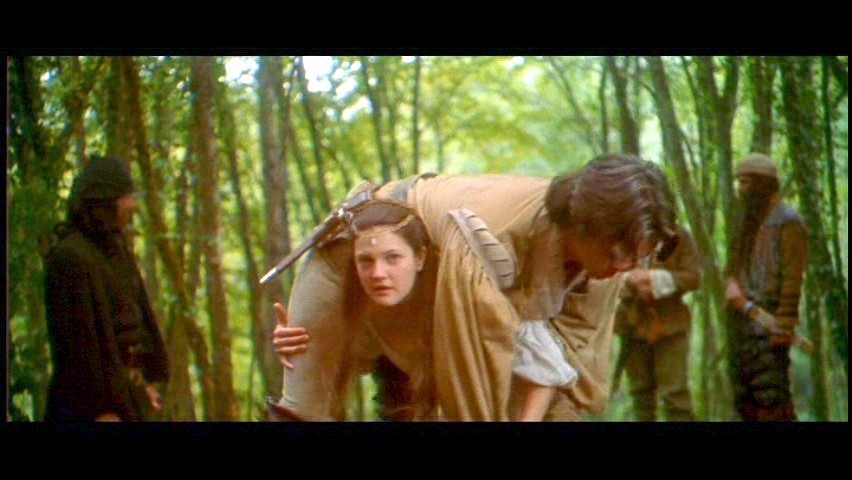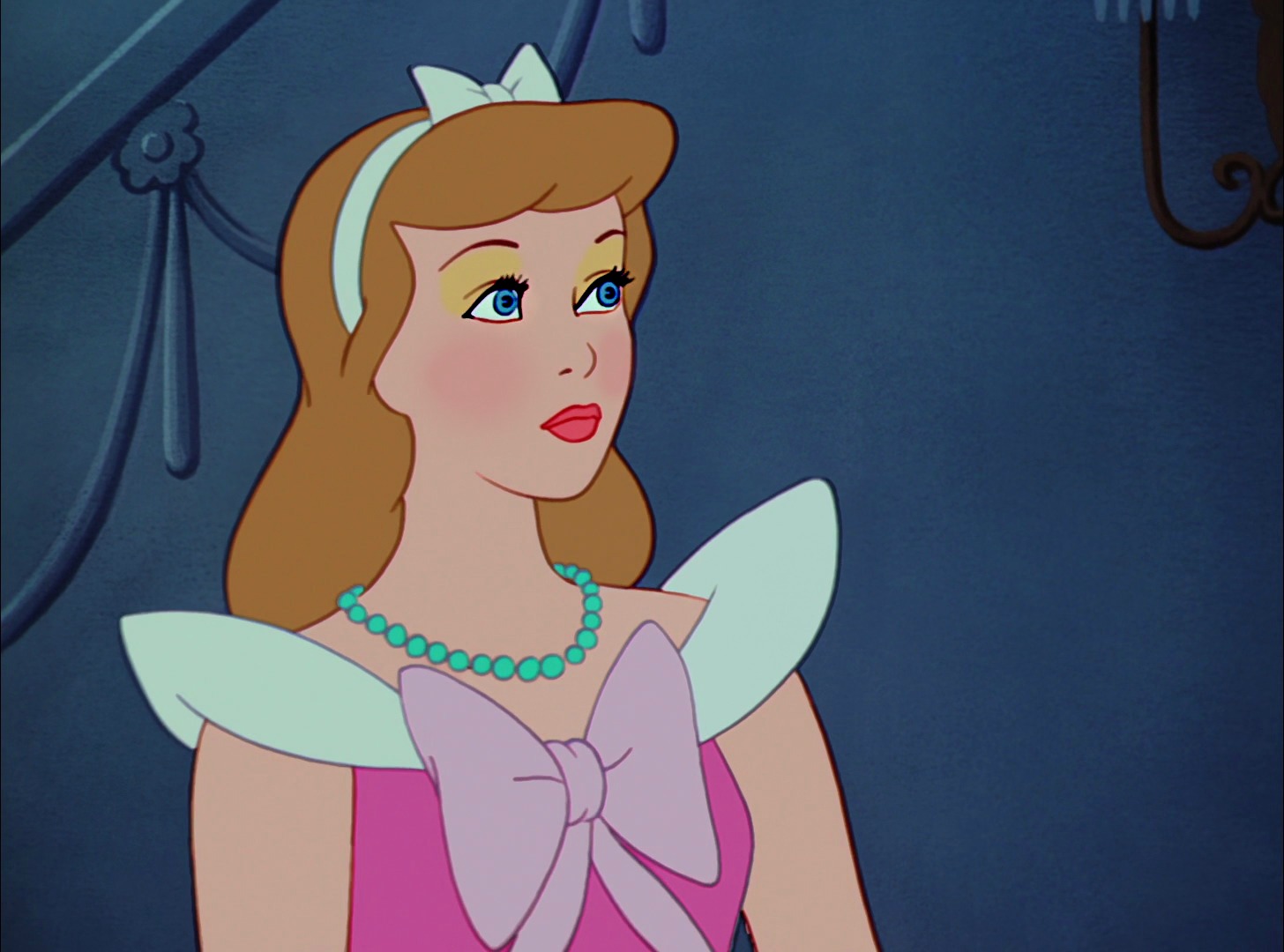Often when people criticize Cinderellas for being passive, they don't actually give us an alternative for what they expect her to do. Sometimes I suspect they haven't really thought through the fact that older Cinderella figures would have few other options, if any, than to accept her servitude.
"Cap O'Rushes"-John Batten
Yet Yolen in her essay did remind us of folkloric versions (most notably "Cap O'Rushes") in which Cinderella does the unthinkable, leaves home, finds herself a new position and ends up gaining a husband and wealth. Because although historical context is important in understanding the world fairy tales came from, fairy tales are hardly restricted to being realistic. Fairy tales are full of characters who defy expectations and are rewarded.
I think a good way to look at how we expect historical Cinderellas to act is by comparing Disney's Cinderella with Danielle from "Ever After". And I'm not bashing Disney at all-in fact his Cinderella reflects all of the storybook versions that had been published in the century previous and we can hardly have expected much different from any version made in the 1950s. So we can think of them in terms of Cinderella from the 1950s verses the 1990s.
In 'Ever After", Danielle still stays subservient to her stepmother until the very end. The one time she does lose her temper and tell her off, she gets a beating, which is, realistically, what would have happened in such a situation.
However, she is a much stronger character than the 1950s Cinderella. Danielle throws apples at someone who is stealing their horses, something I can't picture Disney's Cinderella doing. She's strong and smart, able to banter with the prince in one scene, and lift him up and carry him off from the gypsy camp in another. In the end, she grabs a sword and does rescue herself from that creepy dude. And most importantly (because throwing apples, swordfighting, and lifting princes is hardly the measure of true womanly worth), she is relatable to the audience. I had mentioned to someone in the comments a while back that I think Disney's Cinderella would be more understandable if you saw that she was hurt by her treatment, or a tear trickled down her cheek while she scrubbed her own floors. With Danielle, you can see her fighting her growing resentment and hurt-she shows emotion and we connect with her.
Danielle is an independent tomboy who shows a range of emotions
Disney's Cinderella seems not to mind being her stepmother's slave, until she is unable to go to the ball
In the traditional fairy tale, I'm not too bothered by the fact that Cinderella generally does her chores cheerfully. She has a lame job and a mean boss, which is something we can all relate to in some way, and doing things we don't want to do is just part of life. So if we take the story on a symbolic level, it's not as offensive.
But when you expand the story into novels and movies, Cinderella needs to show more evidence of someone who has undergone mistreatment. Although "Ever After" isn't the most realistic movie in the world, it's still fairly believable for Hollywood, and you can definitely see a huge difference in terms of how a more pro-feminist culture interprets Cinderella-someone who is still kind and compassionate, but also strong. Her courage makes her a good role model, even for those of us who could never in a million years win a sword fight against anybody or aren't considered tomboys.
Hopefully that clarifies things a bit! I'm still trying to sort through all the attacks against passive princesses myself, because while I think many feminist arguments go too far, there is obviously some value in what they have to say.








Considering historical context is key. "Of a Young Girl Nicknamed Peau d’Asne and How She Was Married With the Help of Small Ants" is one of my favorite Cinderellas because it is so old, so not of our time, and she is abused but her defiance is to do everything her family demands without letting it break her spirit. She essentially knows if she can just outlast them, she will win her heart's desire, her marriage to her love. Essentially, you have control of me but you cannot remove my dignity no matter how hard you try.
ReplyDeleteThanks for sharing! I definitely am not as familiar with Cinderella tales as you are! Sometimes, retaining your dignity is, in itself, an act of courage. The spectrum of Cinderella tales present us with a wide variety of solutions to the problem of being mistreated
DeleteIn fact, Heidi, I'd love to hear more of your opinions and thoughts on this topic, if you wouldn't mind responding again here, or even doing a post on Surlalune. How do you respond to those who accuse Cinderella/fairy tale heroines of being too passive?
DeleteY'know, I never thought of "Cap O'Rushes" as a "Cinderella" story. I always thought of it more as one of the "Donkeyskin"/"Allerleiraugh"/"Wooden Maria" type. I know most would considered the father's attempt to marry the heroine the defining trait of those stories, but to me it was more the three miraculous dresses as well as the more noteworthy disguise employed (the rushes, the donkey's skin, the coat of fur and feathers, etc).
ReplyDeleteOf course, now that I think of it, folklorists seem to see that as "Cinderella type B" or something, right? Honestly, classifications can be so weird.
You're right, classifications can be very sticky. The ATU system has classic Cinderella tales as 510A, Catskin/Cap O'Rushes as 510B, And other Indeterminate/similar tales as 511. But they all include a persecuted heroine; a helper (usually magical); meeting a prince (usually in disguise); identification by prince (usually by object); and ending with marriage to the prince.Within those larger categories are subcategories like Princess in the Chest, One-Eye Two-Eyes Three-Eyes, Love Like Salt, even the Kind and the Unkind Girls.
DeleteSee Surlalune's Cinderella Tales Around the World for the classifications!
Somewhat related to your post - have you seen the trailer for Disney's new 'Cinderella' live-action movie? It actually looks pretty good! It engages with some of the issues you've discussed in this post - particularly the tagline, "Have courage and be kind". Not a typical tagline for Disney, or any movie for that matter, these days. What a lot of so-called feminist critics don't understand is that there are different ways to be strong, that don't always have to involve shouting or antagonising people.
ReplyDeleteI have seen the trailer! It will be interesting to see how it turns out...any Disney original or remake in the last 20 years has been more feminist but this seems to be a pretty straightforward retelling with no major twists and turns-no Cinderella weilding a sword and defeating the evil stepmother in a battle. It would actually be really refreshing to have a strong female character who is more subtly feminist, while still being a good role model!
DeleteAgreed!
DeleteThis article might also be of interest to you - an interview with Kenneth Branagh, who seems to have the same train of thought: http://blogs.disney.com/oh-my-disney/2014/11/19/dreams-come-true-new-cinderella-trailer-and-an-exclusive-interview-with-kenneth-branagh/
Ooh thanks! I will probably share part of this on the blog!
DeleteWow, this is fascinating reading. I am glad I found this and got to read it. Great job on this content. I liked it a lot. Thanks for the great and unique info. Cinderella Solution
ReplyDelete